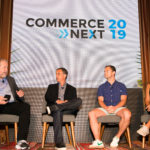The coronavirus has had devastating effects on people and businesses around the world. Many brands are stepping in to help by providing personalized offers to support medical workers, who are among the groups that have been hardest hit.
Headspace is helping nurses and doctors manage the stress of treating COVID-19 by giving them free access to its meditation app. And, vineyard vines and Tuft & Needle are just two of the businesses who are giving exclusive discounts to first responders to thank them for their heroic efforts on the front line of the pandemic.
These programs aren’t just anecdotes about how a company can make a difference in the crisis we face. They’re examples of smart brands supporting consumers during this crisis by engaging them with an identity marketing program—a new personalization strategy that appeals to a consumer’s identity.
By providing personalized offers to consumer tribes like healthcare professionals, first responders and teachers, brands create an emotional connection with their customers and generate goodwill that enhances their brand perception with the general population.
Identity marketing has a serious business advantage over traditional segmentation strategies. Members of consumer tribes are deeply connected, and when they learn of a good deal, they spread the word through their network.
Brands running successful identity marketing programs understand what a consumer tribe is, know how to select the best one, and create offers that win their hearts—and their loyalty.
Why Consumer Tribes are Better Than Market Segments
Consumer tribes are groups of people who share a core attribute, such as vocation, orientation, activities, interests, and perspectives. While the attributes vary from tribe to tribe, they’re all rooted in a person’s identity. Marketing to consumer tribes outperforms marketing to traditional segments because it:
01 Generates Word of Mouth That Leads to Greater ROI
The biggest limitation with engaging traditional market segments is that the people within them don’t know each other. When you send them a personalized offer they can’t share it with others in the segment, which limits your reach.
Members of a consumer tribe, however, are socially connected and look out for each other. When they have a positive brand experience, they will naturally talk about it with their network. By spreading the word organically, consumer tribes become powerful amplifiers of your marketing.
Mattress brand Purple reaped this benefit when it launched a personalized offer for the military—a lucrative consumer tribe that aligns well with Purple’s made-in-the-USA brand identity. When the company launched an exclusive 10% discount for the military, it:
- Promoted the offer through social channels like Facebook and Pinterest.
- Targeted relevant groups, such as military schools.
- Used messaging and imagery that resonated with the military community.
Engaging military members through their social networks paid off. Purple raised awareness, increased its conversion rate by 6x, and enjoyed a 25:1 ROAS.

02 Respects Consumer Privacy
Engaging consumer tribes is pull-based marketing, which is transparent and respects privacy. Rather than “guessing” at a customer’s signals and “pushing” an offer on them, marketers identify their consumer tribe, create an appealing offer, and invite the consumer tribe to enjoy it. By choosing to opt-in, consumers “invite” the brand into their lives and welcome further engagements.
03 Create a Halo Effect
The halo effect occurs when consumer tribes align with a brand they feel represents their identity and their values. Members of a tribe will prefer that brand over others, and this preference can influence people associated with that tribe—such as a teacher’s family or community members who appreciate the military and first responders.
When Tuft & Needle donated mattresses to local firehouses, the firefighters responded enthusiastically. The brand expanded its personalized military offer to include first responders, who started buying mattresses for their homes, friends, and families. Tuft & Needle’s cause marketing efforts generated amazing word of mouth, attracting new customers who appreciated the brand’s commitment to first responders.
And Headspace, an online company specializing in meditation, launched Headspace for Educators, a program offering the company’s free meditation app to all K-12 teachers, school administrators, and supporting staff in the US, UK, Canada, and Australia. Teachers that use Headspace inspire parents, friends, and other adults to pay for and enjoy the app. And when teachers bring Headspace into the classroom, students develop good habits they’ll want to maintain by becoming paid subscribers when they graduate.
The Tremendous Purchasing Power of Consumer Tribes
Consumer tribes are huge, and they have large amounts of money to spend:
- US military: 37 million members have $1 trillion in spending power.
- Teachers: K-12 educators in the US spend $1.7B of their own money on classroom supplies alone.
- Students: There are 235 million college students worldwide, and in the US they spend $593 billion.
- Seniors: 109 million American seniors have $3.2 trillion in spending power.
- US first responders: There are 2.3 million firefighters, EMTs, paramedics, and police officers whose salaries can be as high as $85,000.
- US nurses: There are 4 million nurses and in some states they earn more than $100,000.

How to Reach Your Consumer Tribe
Here are four steps you can follow to effectively select and market to the consumer tribe that best fits your brand.
01 Determine the Attributes of Your Target Market
These attributes include your target market’s age, gender, income level, occupation, how they spend their time, and their preferences. You likely did this groundwork when you created your target personas.
02 Map Your Personas to a Consumer Tribe
Align your personas to a consumer tribe that you can engage through an identity marketing program. The military is a great consumer tribe for home improvement brands such as Lowe’s. Members of the military are often male and value self-reliance and independence—just like many of the DIYers who shop at Lowe’s.
And Michaels, the arts-and-crafts-retail giant, targets seniors who have more leisure time and disposable income to spend on crafts and hobbies, and who love to buy and make things for (and with) their grandkids. Seniors enjoy an exclusive 10% discount, which they can combine with other sales.
03 Send Them a Gated, Personalized Offer
These offers appeal to a consumer tribe’s sense of belonging, motivating them to act. Music streaming service TIDAL gives high school students a 50% discount. This offer creates an emotional connection between the brand and its target audience—young listeners excited to share their favorite tunes with others in their tribe.
And travel brand CheapCaribbean ran a campaign rewarding 50 nurses free flights to a tropical destination, an offer that greatly appealed to nurses who often work long hours, need a vacation, and have flexible hours. Personalized offers that are meaningful to consumer tribes build great loyalty.
04 Run Nurture Campaigns to Deepen Loyalty
The real power of an identity marketing program is the opportunity to build a long-term customer relationship based on trust. When you support a consumer tribe and their values, they will reward you with repeat purchases, increasing the customer lifetime value (CLTV).
For example, Lowe’s military program saw an engagement rate 2-3x higher than other campaigns and doubled the number of trips buyers made to the store.
And there are many ways to support a consumer tribe in addition to giving them a personalized offer. You can:
- Provide direct support, such as T-Mobile’s commitment to hire 10,000 veterans and military spouses by 2023.
- Contribute to related organizations, such as Sprint’s donations to military-friendly nonprofits for every new military/veteran discount.
- Support issues they care about, as UNIQLO and Madewell do.
Customers are bombarded with thousands of advertising messages every day. Engaging your ideal consumer tribe through identity marketing breaks through the noise and sets the stage for a long-term, high-value relationship with your customers.
Where to learn more about community engagement and messaging.
We’re going to deep dive into community engagement and messaging, followed by a panel discussion with the retailers in the upcoming CommerceNext Community Webinar sponsored on Wednesday, April 15th at 2pm ET / 11am PT.
Panelists include:
- Matt Kaness, Executive Chairman, Lucky Brand
- Leslie Emmons Burthey, VP, Marketing, FabFitFun
- Bill Schneider, VP of Product Marketing, SheerID
- Kathy Doyle Thomas, Chief Strategy Officer, Half Price Books
- Scott Silverman, Co-Founder, CommerceNext (Moderator)
To learn more, you can read The Power of Consumer Tribes—an ebook that explains what makes identity marketing a highly effective addition to your personalization strategy.
Related Posts
-
STORY Demonstrates Customer Experience is The Future of Retail
How does offline customer experience impact retail in the digital…
-
Forbes + CommerceNext: Patagonia Demonstrates How Brand Purpose Results In Good Business
Brand purpose and storytelling play an increasingly important role in…
-
Balancing Brand and Performance Marketing At Scale
It seems that these days, every marketing team’s goal is…




